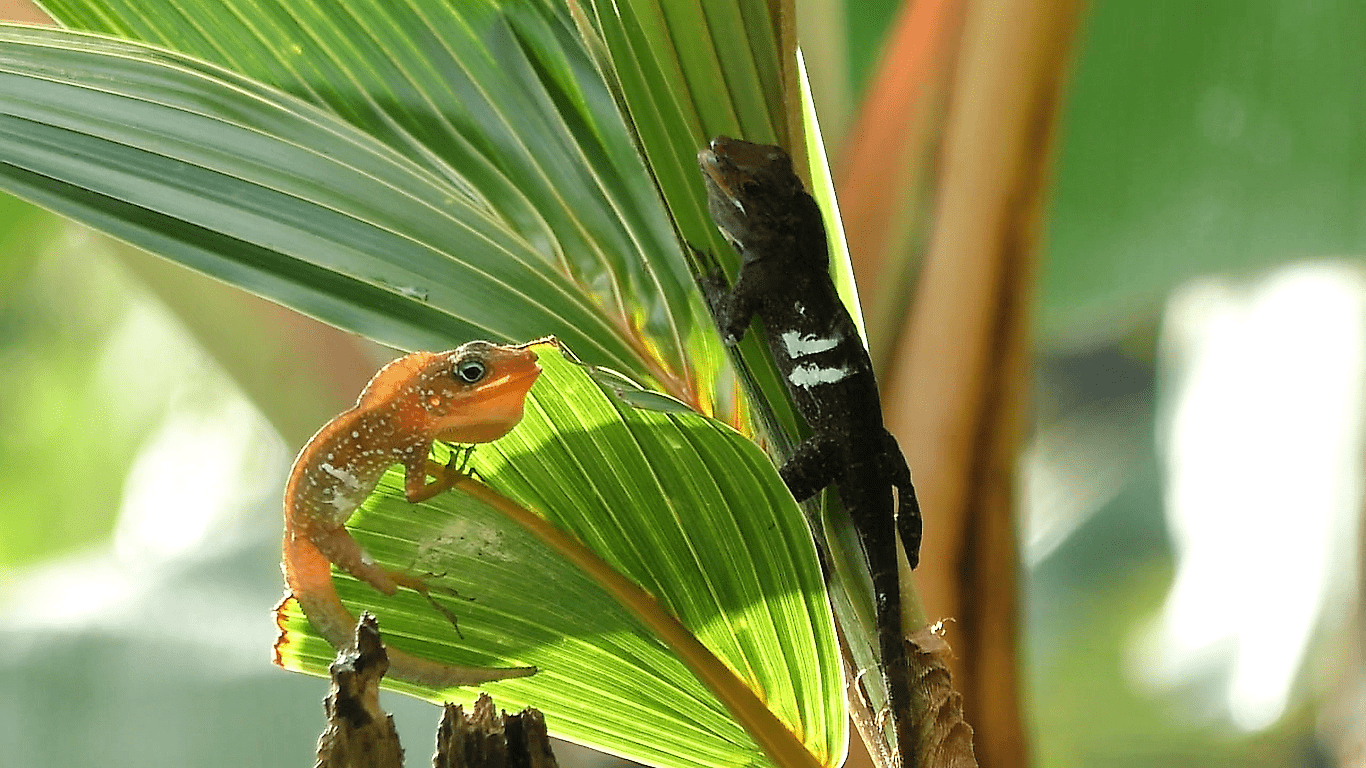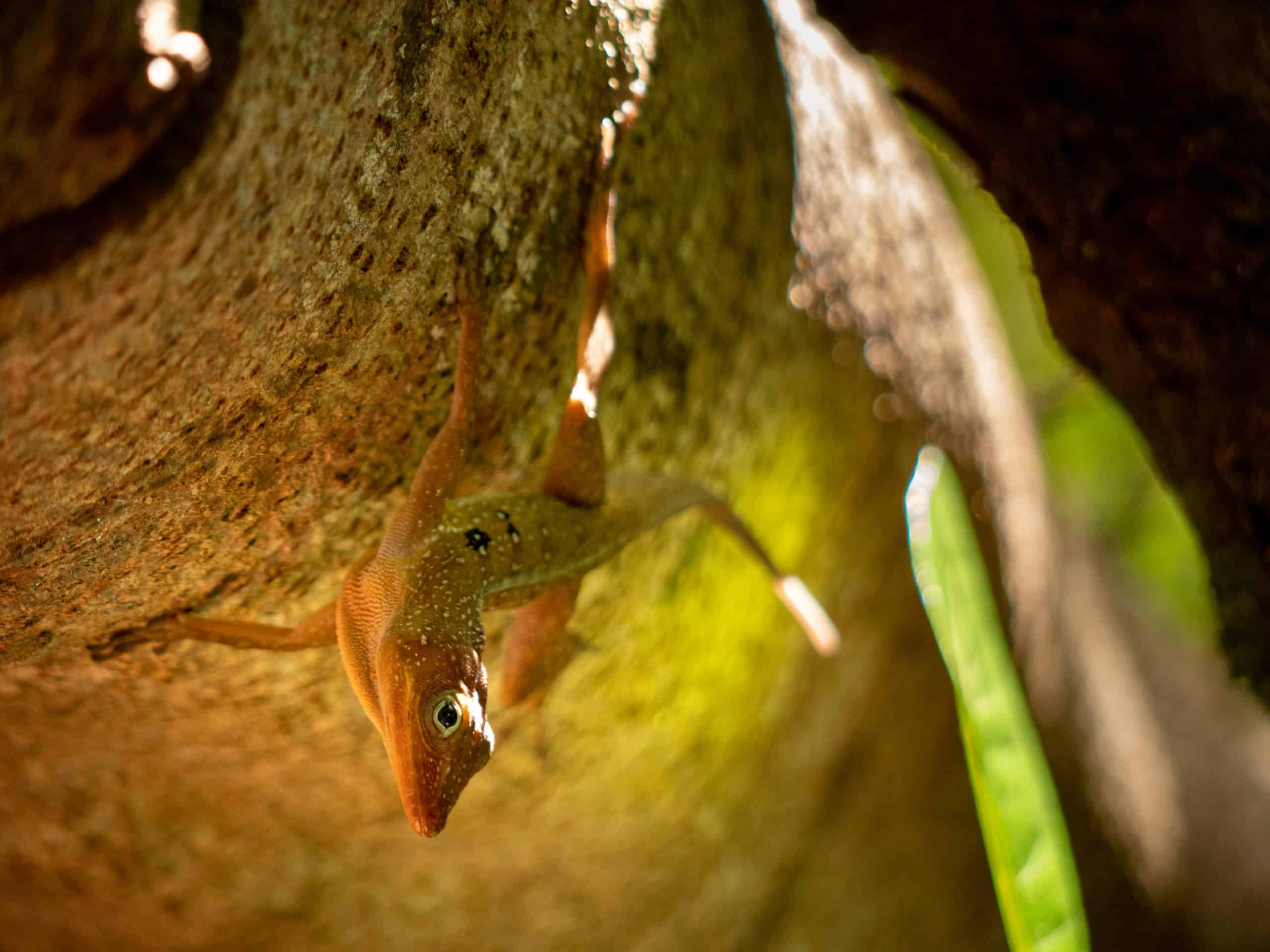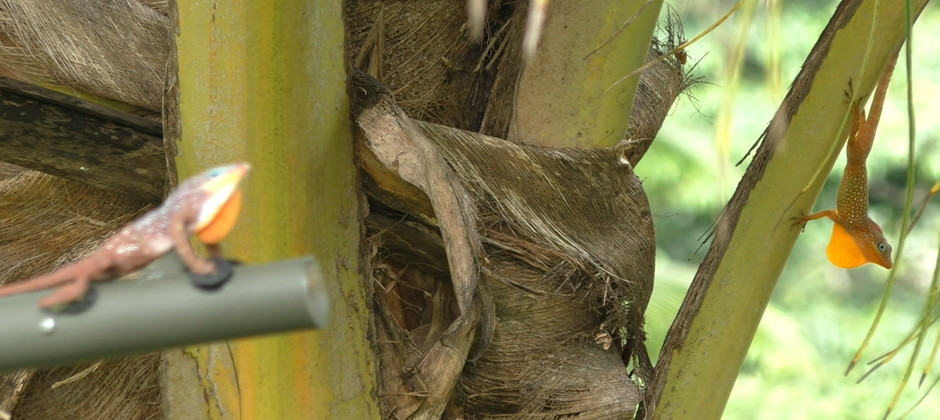Share this article
Alien robots reveal how native lizards turn up fight mode
Native lizards are taking exception to robots invading their home territories when those robots resemble other anoles.
Researchers found that in response to small lizard robots, native Dominican anoles flapped their colorful neck dewlaps and did pushups.
“The native species responded to the invasive by increasing their aggressive behavior,” said Claire Dufour, a lecturer and researcher in behavioral ecology at the University of Burgundy in France.
The Dominican anole (Anolis oculatus) is native to the Caribbean island of its namesake. But since at least 2014, invasive crested anoles (Anolis cristatellus), originally native to Puerto Rico, have expanded across the small country, coexisting in many parts with the native lizards.
Enlarge

Credit: Claire M.S. Dufour
Previous research on anoles have found that native species can change their ecological niche and even body morphology in response to competition from an invasive species. But Dufour and her colleagues wanted to see if the native lizards were changing their behavior in response to the arrival of the invasive species, since behavior would typically change before body adaptations. They built and used robot lizards, some made to look like the invasive anoles and others to resemble the native anoles. All of the robot lizards were equipped with colorful neck dewlaps that pushed out like real lizards as well as the ability to do pushups, both signs of aggressive display in anole species.
For their research, published recently in the Journal of Animal Ecology, they presented the robots to the native Dominican anoles in a series of tests in the field, carefully observing Dominican anoles’ behavior. They introduced the robots both to Dominican anoles that had previously been exposed to invasive crested anoles, as well as to Dominican anoles that hadn’t yet encountered the aliens.
Enlarge

Credit: Aymeric Mauroy
They found that the Dominican anoles from populations that coexisted with invasive crested anoles were more aggressive toward robot anoles — whether they were native robots or alien robots — than ones that hadn’t.
“The increase in the aggressive behavior was pretty spectacular even in just a few years,” Dufour said, adding that this likely helps the native species compete, since aggression likely helps them win fights, whether it’s with other natives or with the invasives.
“The invasive species competes a lot for food but also for sexual partners and for space,” Dufour said. While researchers are now trying to determine whether these two species can mate and produce hybrid offspring, the lizards still appear to try to make it happen.
The authors said that the increase in aggressive behavior displayed by the Dominican anoles could potentially be positive for the native species. While aggression in the Dominican anoles may limit the ability of these two species to coexist, in the case of this invasion, the native Dominican anoles may have the upper hand.
Header Image: A male Dominican anole (background to the right), displays its dewlap to a robot made to appear like another male native anole (foreground) in Dominica. Credit: Claire M.S. Dufour








